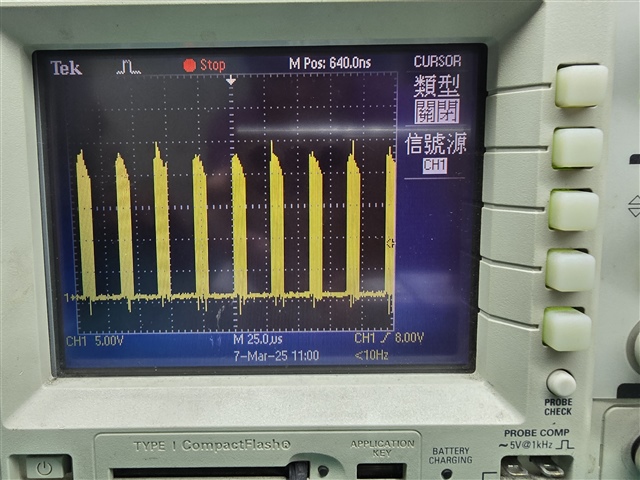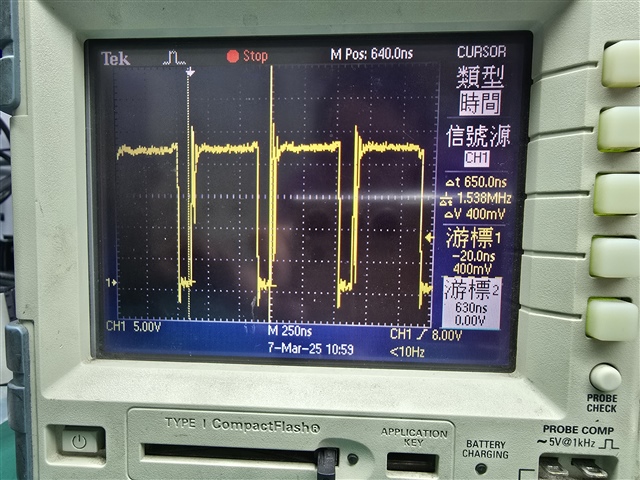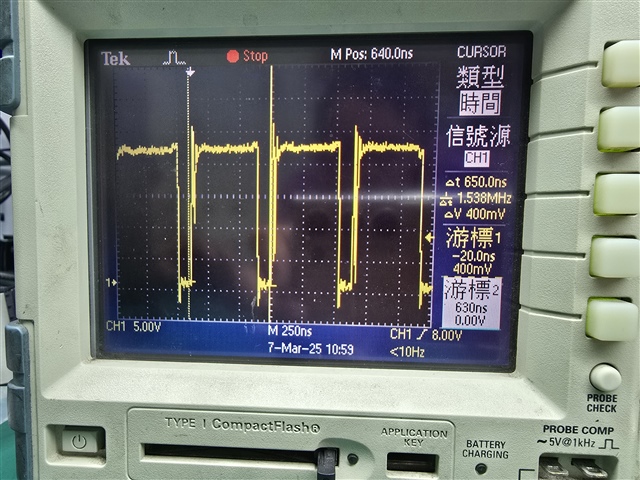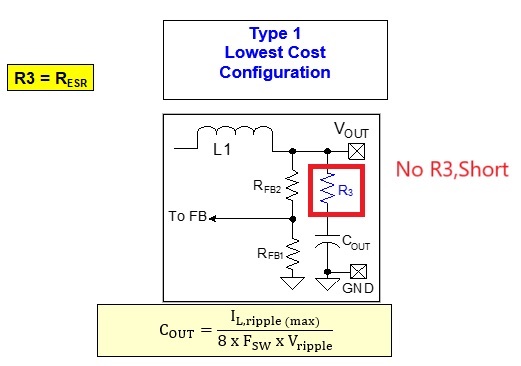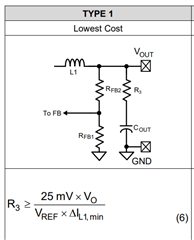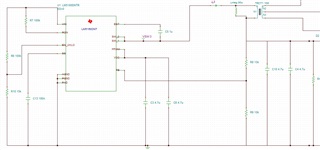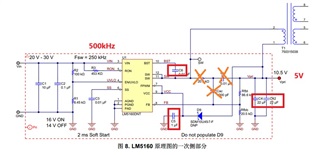Other Parts Discussed in Thread: LM5160
Tool/software:
Hi,
I designed a circuit using LM5160, with an input voltage of 20V, an output voltage of 5V, and a Ron of 100k, so the switching frequency is 500kHz. However, the SW waveform I measured is very strange. Can you tell me what the problem is?
